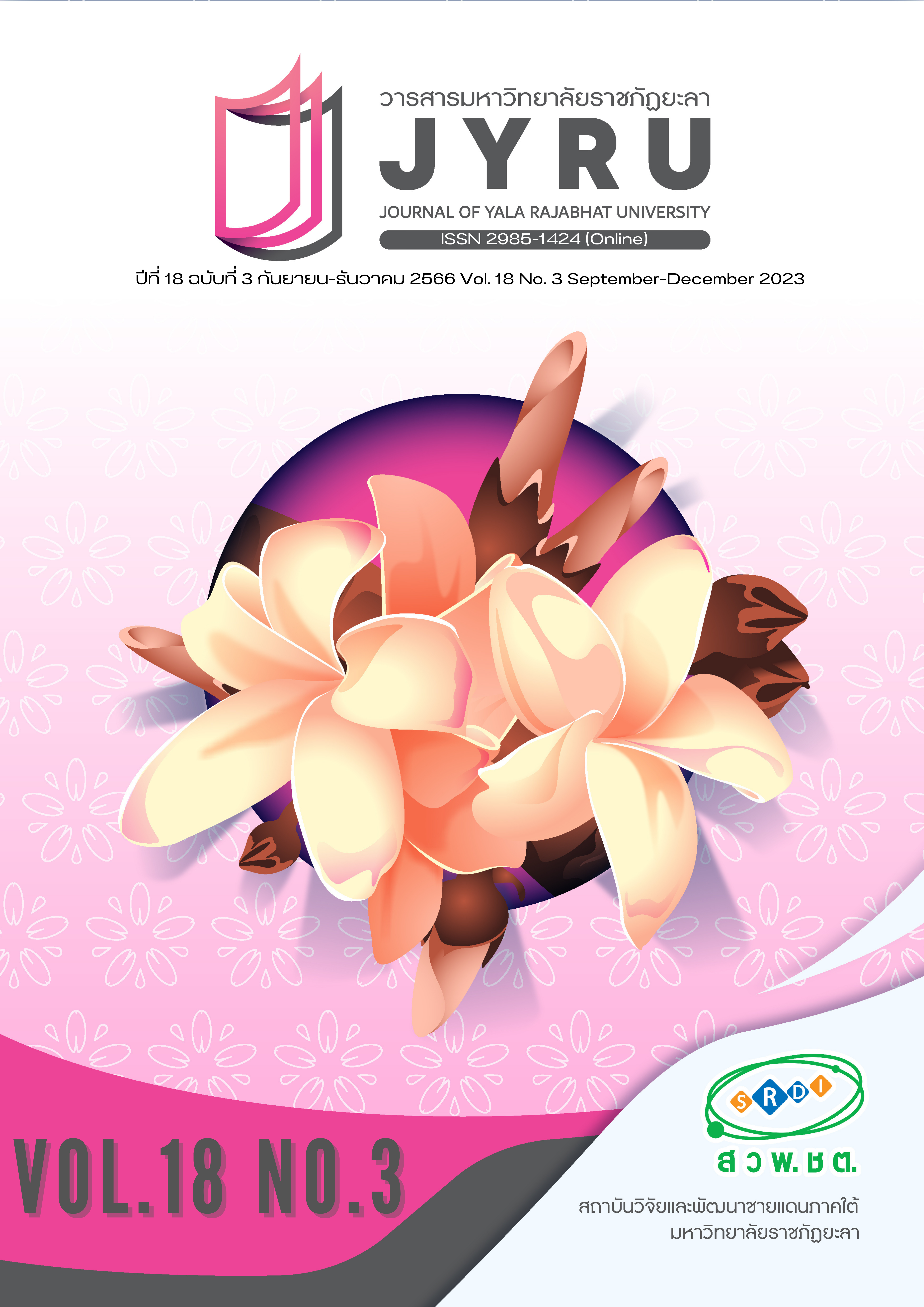Risk Management Model of Private Vocational Colleges in the South of Thailand
Main Article Content
Abstract
At present, private vocational colleges in the southern region still have problems with risk management. They still need a suitable risk management model. This research aims to 1) Study the current condition a risk management model and create a risk management model 2) Study how to apply the model to fit college context at private vocational college in Southern of Thailand. The study is designed into three parts: 1) studying the current situations of risk management using the questionnaires to gather data from 81 samples- executives and risk takers of Southern vocational college. 2) creating a risk management using Delphi method with 17 experts for two rounds. 3) studying the risk management implementation from a group conversation with 16 senior experts. The results showed that 1) The assessment of Southern private vocational college was good, the objectives of risk management were clear, the use of principle of business education was effective, and the requirement of risk management model was obvious. 2) SIAOMCAM Model- a risk management model, was created which was stand for eight issues: “S” stands for situations, “I” stands for Identification, “A” stands for analysis, “O” stands for objective, “M” stands for methods, “C” stands for controlling, “A” stands for audition, and “M” stands for monitoring. 3) Risk management implementation which was suggested by the senior experts was appropriate to apply without changing in any process, however, SIAOMCAM Model should be adjusted to each vocational college appropriately.
Article Details

This work is licensed under a Creative Commons Attribution-NonCommercial-NoDerivatives 4.0 International License.
Copyright Notice articles, information, images, etc. was published in this Journal of Yala Rajabhat University is a copyright of the journal Yala Rajabhat University. If any person or deparment wants to bring all or part of it for publish or take any action. Authorization is required in written form from the Journal of Yala Rajabhat University only.
References
Boonphak, B. (2017). Business education from the past to the 21st century. Journal of Education Studies, 45(4), 274-289. (in Thai)
Chittayawong, S. (2019). A variety of voices echoed when executives 'private vocational' request release from VEC [Online]. Retrieved June 23, 2019, from: https://www.matichon.co.th/education /news_1491725. (in Thai)
Chuvanichanont, N. (2019). Student dropout problem solution in Chonburi Vocational College. Master of Education. Burapha University
Fuentes, C. & Lizarzaburu, E. (2011). Norms and international standards related to reduce risk management: A Literature review : Financial Markets & Institutions, Virtus Interpress, 1(3), 58-73.
Jensantikul, N. (2017). Utilizing the delphi technique for research. Political Science of Kasetsart Universty Review, 4(2), 47-64. (in Thai)
Moungplod, N. (2017). The Development factors and indicators of risk management of small basic education schools in the south east coast. Thesis Doctor of Education. Hatyai University. (in Thai)
Johnson, R. B. & Christensen, L. B. (2004). Educational research: Quantitative, qualitative and mixed approach. [Online]. Retrieved March 25, 2018, from: http://dx.doi.org/10.3102/0013189X033007014
Lacob, C. & Zaharia, S. (2012). Risk management - A new priority system customs and ITS consequences. Romania: University of Craiova.
Lertwathong, R. & Chansiri, P., (2018). The model of risk management on the Academic Work of Secondary Schools under the Provincial Administration Organization. Journal Suthiparithat of Business and Innovation, 9(104), 201-209. (in Thai)
Likert, R. (1976). New patterns of management. New York: McGraw - Hill.
Office of the Education Council. (2017). Vocational education development plan (2017-2036). Bangkok: Office of the Higher Education Commission. (in Thai)
Office of the Education Council. (2016). Education reform for a stable, prosperous and sustainable future of thailand education policy of the prime minister (General Pray Chan-ocha). Bangkok: 21 Century. (in Thai)
Office of the National Economic and Social Development Council. (2020). Southern Development Plan 2017-2022 (revision). [Online]. RetrievedJanuary 31, 2023. from: http://wise.co.th/wise/References/Thailand_Development/Southern_Group_Plan_2563.pdf
Office of the Vocational Education commission. (2018). Data on the number of students in the academic year 2018 classified by province, region Educational institutions of subject type, field of study, work field and level (private sector) as of June 10, 2019. [Online]. Retrieved 17 August 2018 from: http://vecp.vec.go.th. (in Thai)
Pattanachuriphan, P. (2014). Risk management in educational opportunity expansion schools. Thesis Doctor of Education. Mahasarakham University. (in Thai)
Saatcham, N. (2007). Enterprise risk management. Bangkok: Than Books.
Sinprasong, A. & Chaichit, M. (2015). A risk management model in private technological and vocational colleges. FEU Academic Review, 9(2-4), 204-215. (in Thai)
Srisaenpang, C. (2013). The development of risk management system in primary schools. Education Thesis doctor. Mahasarakham University. (in Thai)
Sukontharat, N. (2017). Communication strategies for corporatr image of vocational education institutes in thailand toward social responsibility framework. [Online]. Retrieved March 25, 2018. from: http://www.mgts.lpru.ac.th/journal/index.php/mgts/article/view/388/137. (in Thai)
The Stock Exchange of Thailand. (2014). Annual Enterprise Risk management (ERM Framework) Budget 2014. [Online]. RetrievedFebruary 20, 2018. from: https://www.set.or.th/th/about/overview/files/ERM_Framework_2017.pdf.


